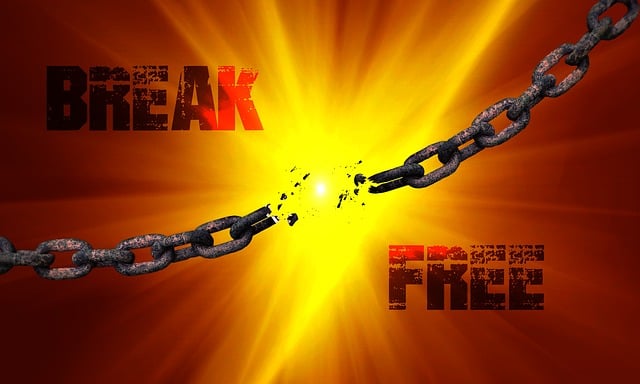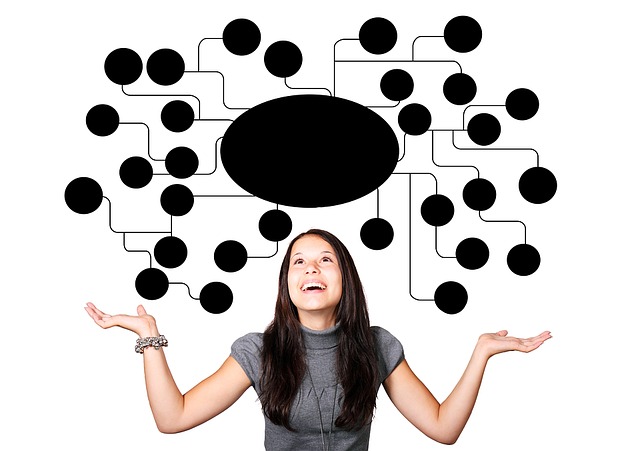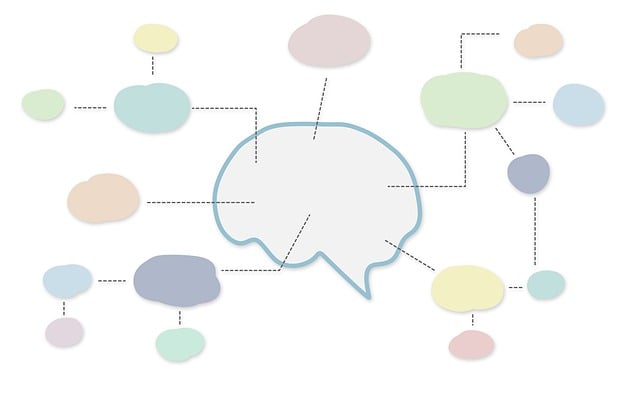Are you tired of scribbling endless linear notes that make your mind feel cluttered? Well, it’s time to break free from the chains of conventional note-taking systems and unleash the power of your mind with an ingenious method called mind mapping. A mind map is not just a simple diagram; it’s a dynamic and visual way of organizing information that stimulates creativity and enhances understanding. So, get ready to embark on a fascinating journey through the world of mind maps, where your thoughts will flow freely and your notes will come alive. Grab a pen and paper, because it’s time to revolutionize your note-taking experience!
Contents
- What is a mind map and why is it a valuable note-taking system?
- Understanding the underlying principles of mind mapping
- How to create an effective mind map
- The benefits of using mind maps for note-taking
- Tips for using mind maps to unleash your full note-taking potential
- Tips for maximizing the power of mind maps in your note-taking process
- Enhancing creativity and memory retention with mind maps
- Integrating technology with mind maps for efficient note-taking
- Recommended resources for further improving your mind mapping skills
- Frequently Asked Questions
- Future Outlook
What is a mind map and why is it a valuable note-taking system?
A mind map is a powerful visual tool that helps capture and organize information in a more creative and holistic way. It is a diagram that starts with a central idea or topic and branches out into related subtopics and key points. Using colors, images, keywords, and connecting lines, mind maps allow you to represent ideas and their relationships, helping you to comprehend complex concepts more easily.
One of the reasons why mind maps are a valuable note-taking system is their ability to engage both hemispheres of the brain – the logical left side and the creative right side. This makes the note-taking process more engaging and memorable. Mind maps also promote spatial awareness, allowing you to see the big picture while still maintaining a clear view of the details. By using visual cues and hierarchical structure, mind maps enhance your ability to recall information and make connections between ideas.
- Improved organization: Mind maps provide a structured format to capture and categorize information effectively.
- Better understanding: By visualizing relationships between ideas, mind maps facilitate comprehension and deeper understanding of the subject matter.
- Enhanced creativity: The free-flowing nature of mind maps encourages thinking outside the box, stimulating creativity and generating fresh ideas.
- Efficient study tool: Mind maps can condense vast amounts of information into a concise form, making them an efficient study aid for exams or presentations.
Understanding the underlying principles of mind mapping
Mind mapping is a powerful tool that can help us unleash our creativity and organize our thoughts in a visual and structured manner. By understanding the underlying principles behind mind mapping, we can fully utilize its potential and enhance our problem-solving abilities. Here are some key principles to keep in mind:
1. Start from the center: When creating a mind map, begin with a central idea or topic. This acts as the focal point from which all other ideas stem. By placing the main concept at the center, it becomes easier to branch out and explore different aspects related to it.
2. Use colors and images: Mind maps are not limited to just words and phrases. Incorporating colors and images can add depth and spark creativity. Utilize different colors to categorize ideas or highlight important points. Incorporating relevant images can also help in visualizing concepts and making connections between different ideas.
How to create an effective mind map
Creating an effective mind map is a valuable skill that can enhance productivity and boost creativity. Whether you’re organizing ideas for a project, planning your goals, or just trying to visualize complex concepts, a mind map can be an incredibly powerful tool. To get started, follow these simple steps:
1. Choose a central theme: Begin by selecting a central idea or topic that you want your mind map to revolve around. This could be a single word or a phrase that captures the essence of what you want to explore.
2. Branch out with main ideas: Using HTML to format your mind map, create main branches radiating from the central theme. These branches should represent the key concepts or main categories related to your topic. Be bold and creative in your choices, but also ensure they are logical and cohesive.
3. Expand on sub-topics: Once you have your main branches established, it’s time to delve deeper into each sub-topic. Create sub-branches, using unordered lists, that connect to the main branches. These sub-branches should flesh out the details and provide a comprehensive overview.
4. Use colors and visuals: To make your mind map visually appealing and easy to understand at a glance, consider incorporating colors, icons, and images into your design. Colors can be used to differentiate between branches or highlight important information, while icons and images can add visual cues and enhance the overall aesthetic.
5. Review and refine: After completing your mind map, take a step back and review it. Make sure the connections between branches are clear and logical. Edit and refine your map as needed, ensuring it accurately represents your thoughts and ideas.
In summary, creating an effective mind map is a straightforward process that involves selecting a central theme, branching out with main ideas, expanding on sub-topics, using colors and visuals, and reviewing and refining. With practice, you will discover the power of mind mapping as a valuable tool for organizing thoughts and unlocking your creative potential.
The benefits of using mind maps for note-taking
Note-taking is an essential skill for students and professionals alike, and using mind maps can revolutionize the way you capture and organize information. Not only do mind maps enhance creativity and engagement, but they also offer numerous advantages over traditional linear note-taking methods.
1. Boosts comprehension and retention: Mind maps provide a visual representation of information, making it easier to understand complex topics and spot connections between ideas. By organizing key concepts and supporting details in a hierarchical and interconnected manner, mind maps facilitate better comprehension and help in retaining information efficiently.
2. Enhances creativity and critical thinking: Mind maps stimulate both the creative and logical parts of the brain. The combination of colors, shapes, and images activates the creative side, aiding in generating ideas and making the process of note-taking more enjoyable. Additionally, mind maps encourage critical thinking by allowing you to evaluate and analyze information, enabling a deeper understanding of the subject matter.
Tips for using mind maps to unleash your full note-taking potential
Tips for maximizing the power of mind maps in your note-taking process
When it comes to note-taking, mind maps can be your secret weapon for organizing information in a visually appealing and efficient manner. To make the most of this powerful tool, keep the following tips in mind:
- Start with a central topic: Begin your mind map by identifying the central theme or topic. This will serve as the focal point from which all your ideas will branch out.
- Branch out with keywords: Use short and concise keywords to represent your subtopics. These keywords should be relevant to the central topic and help you quickly capture key concepts.
- Use colors and images: Make your mind map visually stimulating by adding colors and images to each branch. This not only adds an aesthetic appeal but also helps in better memory retention.
- Create hierarchies: Establish a clear hierarchy by structuring your mind map with primary, secondary, and tertiary branches. This way, you can easily understand the relationship between ideas and subtopics.
Take your note-taking game to the next level by incorporating mind maps into your study routine! By utilizing central topics, keywords, colors, and hierarchies, you’ll unlock your full note-taking potential and grasp complex information effortlessly.
Enhancing creativity and memory retention with mind maps
One of the most effective tools for enhancing creativity and memory retention is the use of mind maps. Mind maps are visual representations of ideas and information, allowing you to organize thoughts and concepts in a way that stimulates both sides of the brain. By utilizing colors, images, and keywords, mind maps engage your creativity, making it easier to think outside the box and generate innovative ideas.
Not only do mind maps boost creativity, but they also enhance memory retention. The visual nature of mind maps taps into the brain’s natural ability to remember images and patterns. By creating associations between different ideas and linking them visually, you create a mental framework that makes it easier to recall information later. Whether you are studying for an exam, preparing a presentation, or brainstorming ideas for a project, mind maps provide a powerful tool to boost your memory and ensure that information is retained more effectively.
Integrating technology with mind maps for efficient note-taking
In today’s digital age, finding effective ways to enhance note-taking is crucial for students, professionals, and anyone seeking to organize their thoughts efficiently. One innovative approach that has gained popularity is integrating technology with the traditional practice of mind mapping. By combining these two powerful tools, individuals can unleash their creativity, improve retention, and streamline their note-taking process.
How can technology and mind maps work together to transform your note-taking experience? Firstly, utilizing mind mapping software or apps allows you to create dynamic and visually appealing diagrams, helping you to organize complex ideas in a structured manner. With just a few clicks, you can easily connect concepts, add color-coded branches, and attach relevant files or links for deeper understanding. Additionally, digital mind maps offer the flexibility to rearrange and modify your notes effortlessly, ensuring your ideas flow seamlessly and are easily accessible when studying or revisiting information.
Recommended resources for further improving your mind mapping skills
Looking to enhance your mind mapping skills? We’ve curated a list of invaluable resources that are sure to take your mind mapping abilities to the next level. Whether you’re a beginner or an experienced mind mapper, these recommendations will provide you with the tools and knowledge you need to create stunning and effective mind maps.
- Books: Dive into the world of mind mapping with classics like Tony Buzan’s “The Mind Map Book” or Jamie Nast’s “Idea Mapping.” These comprehensive guides will help you understand the theory behind mind mapping, offer practical tips, and provide numerous examples to inspire your own creations.
- Online courses: Consider enrolling in an online course to gain a deeper understanding of mind mapping techniques. Websites like Coursera, Udemy, and Skillshare offer courses taught by experts in the field. Look for courses that cover topics such as advanced mind mapping strategies, visual thinking, or mind mapping for business purposes.
- Mobile apps: Take your mind mapping skills wherever you go with user-friendly mobile apps. Apps like MindNode, XMind, and iThoughts allow you to create, edit, and organize your mind maps on your smartphone or tablet. With features such as color coding, audio notes, and the ability to collaborate with others, these apps are excellent tools for practicing and perfecting your mind mapping techniques.
Remember, improving your mind mapping skills takes practice and patience. So, why not explore these resources, experiment with different approaches, and watch as your mind maps evolve into powerful visual aids for organizing thoughts, generating ideas, and sparking creativity.
Frequently Asked Questions
Q: What is a mind map?
A: A mind map is a visual note-taking system that allows you to organize information in a structured and creative way.
Q: How does a mind map work?
A: Mind maps typically begin with a central idea or concept, which is placed at the center of the map. From there, branches radiate outwards, representing different subtopics or key points related to the central idea.
Q: What are the benefits of using a mind map?
A: Mind maps facilitate brainstorming, improve memory retention, enhance creativity, and provide a holistic overview of a topic or project.
Q: Can anyone create a mind map?
A: Absolutely! Mind maps can be used by students, professionals, and anyone looking for an effective way to organize and brainstorm their thoughts.
Q: What tools are required to create a mind map?
A: While traditional tools such as pen and paper can be used, there are also various digital mind mapping applications available that provide additional features and flexibility.
Q: How can mind maps help in unleashing the power of note-taking?
A: Mind maps help transform ordinary note-taking into a more engaging and effective process. By visually connecting ideas and organizing them hierarchically, mind maps allow for better comprehension and recall.
Q: Are mind maps only useful for academic purposes?
A: Not at all! Mind maps can be utilized in various settings, including business meetings, project planning, creative writing, problem-solving, and even personal growth exercises.
Q: Can mind maps replace traditional linear note-taking methods?
A: Mind maps are a complementary tool rather than a complete replacement for traditional note-taking methods. However, they offer a different perspective and can be more impactful in certain situations.
Q: What are some tips for creating an effective mind map?
A: Start with a clear and concise central idea, use keywords and images to represent concepts, prioritize important information, and keep the map visually appealing. Additionally, color coding and connecting related ideas can further enhance clarity.
Q: Where can one learn more about mind mapping techniques?
A: Numerous resources are available, including books, online courses, and video tutorials. Moreover, exploring different mind mapping software and experimenting with different styles can significantly improve your mind mapping skills.
Future Outlook
In conclusion, adopting a mind map as a note-taking system can unlock immense cognitive potential, allowing ideas to flow freely and enabling more effective organization and understanding of information. Embracing this powerful tool can revolutionize the way we process and retain knowledge.






